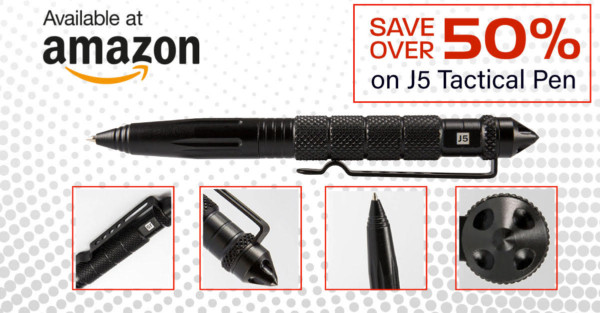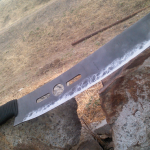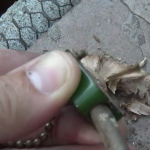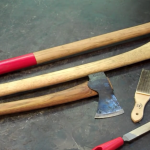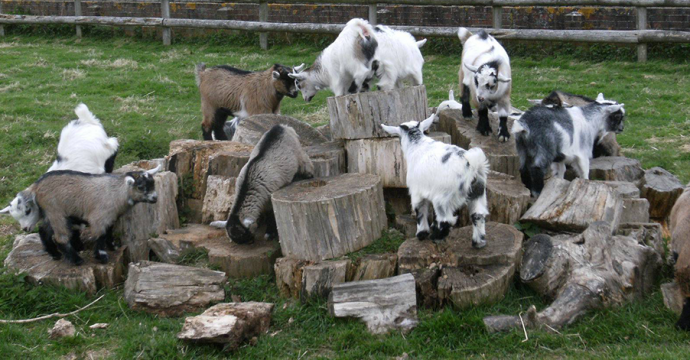
Goats are not created equally, and different breeds are ideal for different purposes. Some produce more and better quality milk than others while certain breeds are better for meat. Some breeds are ideal for small spaces or when resources for feed and grazing are an issue as well. Let’s take a quick look at a general guide to common breeds so you end up with the right goats for your needs.
Dairy Breeds

When it comes to dairy goats, butterfat content as well as production capacity are important factors to consider. Nigerian Dwarf goats are perfect for smaller homesteads and they also have a nice disposition which makes them good pets. They can produce about four pounds of milk on a daily basis and live for about 12 years. La Manchas are medium-sized goats that aren’t too ornery. They produce milk that has about 4% fat and they can adapt to varying environments with relative ease. The Alpine goat can get pretty big, sometimes in excess of 130 pounds. They can live in almost any environment and have the capacity to produce a lot of milk that is high in protein with about 3.5% butterfat.
Meat Breeds
When looking for meat goats, size and meat to fat ratio is important. In other words, you want “beefy” goats instead of scrawnier alternatives. The Spanish Meat goat is a great example. They prefer to feed on brush and scrub grass, and they are also known for dining on leaves or twigs as well. Expect this breed to grow to about 200 pounds. The Boer goat is a big, sturdy and beefy goat that can get as big as 300 pounds. They have long, floppy ears and horns that angle backward over their heads. If you’re looking for a meat and milk goat, then go with the Kiko breed. They eat almost anything, and they also don’t eat a lot, which makes feeding them easy. They also grow very fast and this can translate into having access to more meat in a shorter amount of time.
Fur Breeds
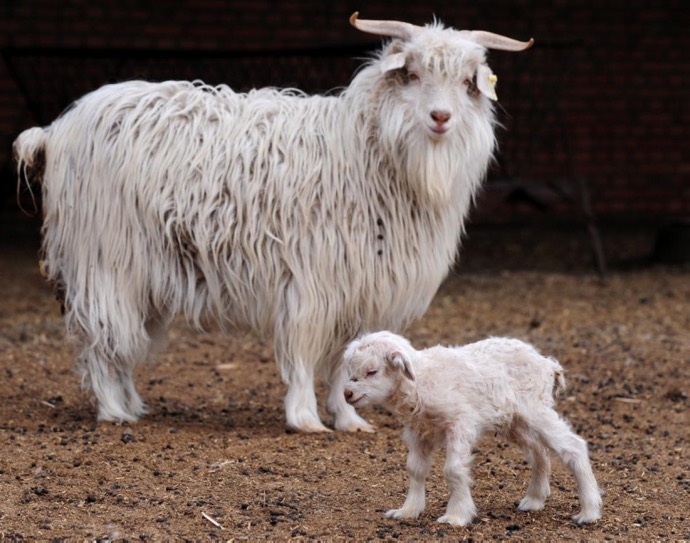
While attention is often given to goats for their meat or dairy production, certain breeds are an excellent choice for their coat. You can use it to make all sorts of material from pillow stuffing to blankets if you have the skills. Their coats can also turn out to be a commodity during a SHTF or survival situation. The Cashmere goat is where we get those famous sweaters, and their coat consists of tougher outer fur that covers the soft and delectable material underneath. The Angora goat have a long and thick fleece and this breed is the one that comes to mind when you hear “mohair”, and they also resemble sheep. This breed can produce fur that can be cut at a rate of about one inch per month.
Pets

Good pet breeds are docile, playful and don’t require a lot of food. You can also get milk from the breeds listed below, but the milk isn’t produced in large quantities. Pygmy goats are small, weighing in at about 70 pounds. They can live up to 15 years and are considered to be tame and very intelligent. Kinder goats are very playful and can produce a steady supply of milk. They usually grow into the mid-size range and relatively easy to care for. Finally, the Mini Dairy goat can live for 20 years and thrive in good-sized back yards. They are easy to care for as long as they have food and shelter, but they also prefer to enjoy the company of other goats.
Keep in mind that most goats are herd animals, and they will be happier and more easy to control if they are not alone. Having more than one goat is also good for you and your ability to maintain a good level of self-sufficiency. Take a closer look at which breeds will work best for you, your environment and overall needs, and you can easily find the perfect match.


